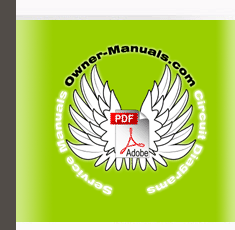|
|
|
Categories
|
|
Information
|
|
Featured Product
|
|
|
 |
|
|
There are currently no product reviews.
 ;
Very fast and perfect delivery. Clear and well scanned. A lot of work professionally realized.
Again thak you a lot
 ;
This manual is accurate and of high quality. It is only volume 2 of the service manual. This is schematic, parts lists, and exploded mechanical drawings. The theory of operation and the diss-assembly instructions are in volume 1. The unit can be tricky to dis-assemble portions of so the volume 1 manual can be important. The product description of the manual is accurate but it does not say anything about volume 1 and the image of the front page does clearly say Volume 2.
 ;
Wellll again thank you very much fast and effective. Clear and well done for such an old TV!!!!
 ;
It has all the information you will need to fix it. The main circuit diagram is only A4 but being a PDF, you can print it to any size - I did it on two sheets of A3 and it didnt lose any detail - just made it readable when pinned up above the bench. I've found the fault, just need to buy some obscure bits to get it going again!
I cant fault the process, I paid for the manual in the morning and it was ready to download by lunch time.
 ;
Very good copy in a 54 pages PDF archive. This is my sixth purchase here. :)
(7) CDCC parallel I/O <Data receiving> There are two modes in this unit. One is the CPU receiving mode and the other is the DMA receiving mode. In the CPU receiving mode the CPU receives the command data from the PC, and after the CPU is switched to the DMA mode, it receives the image data and writes to the DRAM directly. CPU Receiving Mode
STROBE
BUSY ACK 90 µsec 0.5 µsec
STROBE
BUSY ACK 1.5 µsec 0.5 µsec
BUSY goes HIGH at the falling edge of STROBE. The data (8 bits) from the PC is latched in the data buffer at the rising edge of STROBE. The pulse width of ACK differs according to the speed MODE as shown above. BUSY goes LOW at the rising edge of ACK. <IEEE1284 support> This supports the IEEE1284 data transfer with the following mode. Nibble mode Byte mode (8) Data extension This circuit extents the compressed image data which are received from the PC, and writes the bit map data to the FIFO. (9) Software support Supports 16 x 16 rotation, bit expansion, and bit search. (10)EEPROM I/O One output port and one I/O port are assigned.
II-11
|
|
 |
> |
|
|
Parse Time: 0.261 - Number of Queries: 135 - Query Time: 0.054
